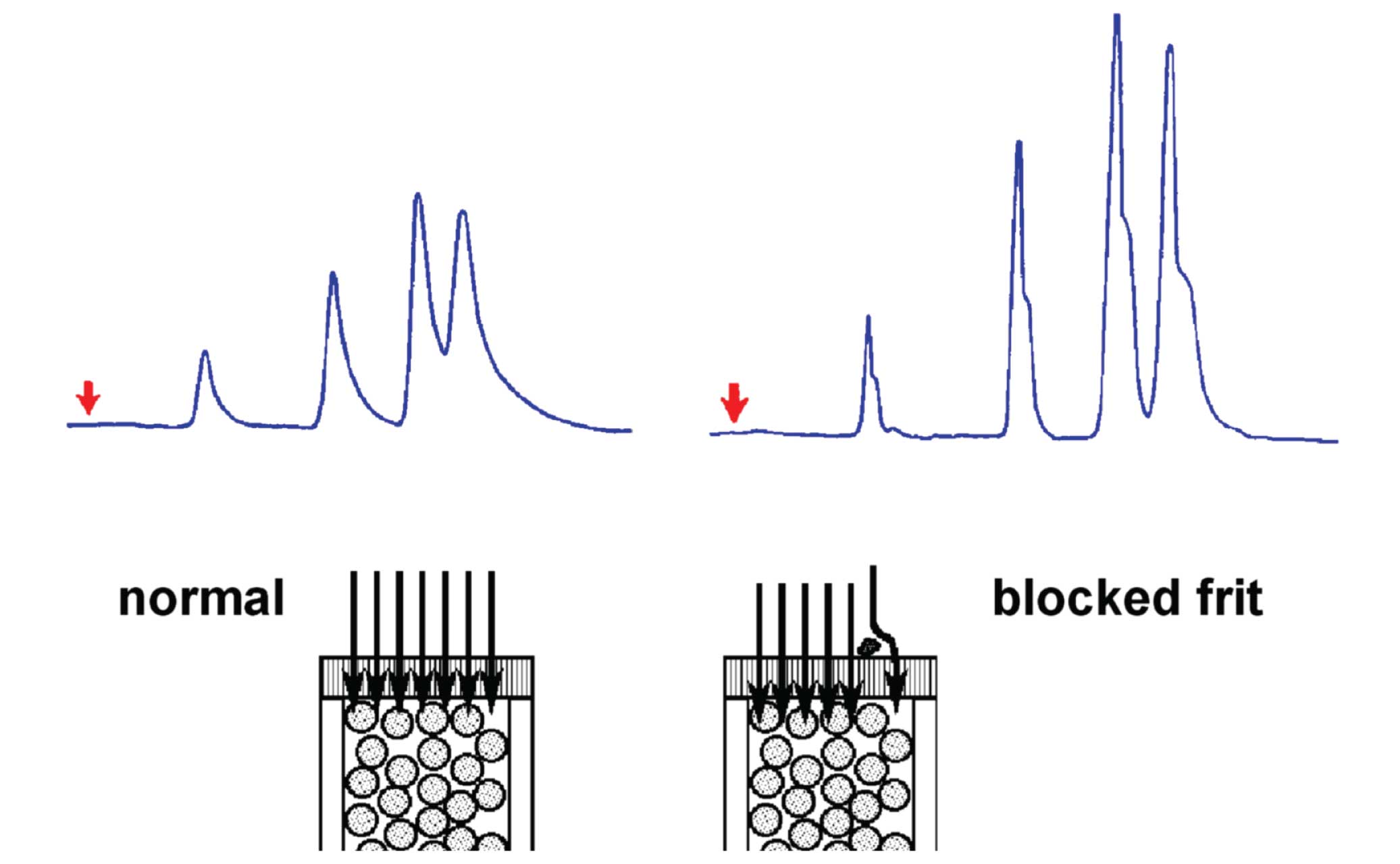Earlier this year, I was in London, teaching an HPLC troubleshooting class in conjunction with Separation Science. I love to teach, so the presentation of short courses is one of the highlights of my job. In addition, these classes often serve as source material when I write about troubleshooting. This class was no exception. At the beginning of each class, I try to collect a list of possible problems or questions that the attendees have, then I try to fit them into the discussion as the class proceeds. For the last class in London, one of the attendees complained that his column was not lasting as long as he thought it should. One of the symptoms of failure was high column pressure, and this often was accompanied by badly tailing peaks throughout the chromatogram. He also wondered if there was a way to regenerate the column once this problem occurred. Let’s take a closer look at the problem and some possible solutions.
High column back-pressure most commonly is associated with blockage or partial blockage of the inlet frit at the head of the column. As the frit becomes blocked, the pressure rises. This is one of the symptoms of column aging that is observed with many methods. Such pressure rises also may be accompanied by increased peak tailing for all the peaks in the chromatogram, as was the current complaint. In other cases, peaks may be split or doubled, as shown in Figure 1.
 Figure 1
Figure 1
One cause of peak-shape problems for all peaks in a run is shown in cartoon fashion at the bottom of Figure 1. On the left, the sample passes through the frit at the top of the column in parallel streams (arrows), with all sample streams reaching the top of the column at the same time, much like a new showerhead gives a nice, even stream of water. When a partial blockage of the frit occurs, such as is shown on the right, the incoming sample stream is distorted. In this drawing, the sample stream at the far right edge is distorted and gets to the top of the column after the other ones. This means that the sample molecules in this flow stream are effectively injected later than the remaining ones. As no separation has taken place yet (the sample is at the top of the column), some molecules of each sample component lag behind the remaining molecules. And because they start late, they never catch up with the molecules that reach the top of the column first. The later molecules result in a tail at the rear edge of all the peaks in the chromatogram. In extreme cases, all the peaks may be split or doubled. The key feature to identify this problem type is that all peaks in the chromatogram are distorted in the same way, suggesting the problem occurred before any separation took place.
The simplest procedure to correct the problem is to reverse the column and back-flush it. This process was described in another article, and will correct the problem about a third of the time. If you experience such symptoms of column frit blockage, you should filter the sample and/or use an in-line filter to protect the column, as discussed in the articles 'Column Protection #1: Filtration or Centrifugation?' and 'Column Protection #2: In-Line Filter'.
This blog article series is produced in collaboration with John Dolan, best known as one of the world’s foremost HPLC troubleshooting authorities. He is also known for his research with Lloyd Snyder, which resulted in more than 100 technical publications and three books. If you have any questions about this article send them to TechTips@sepscience.com




